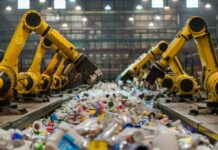Cepi has gone on to examine the endeavours of pulp and paper industry participants to lower carbon emissions, which require campaigns such as decarbonising or completely removing heating procedures during production.
The pulp and paper sector has been ensuring attempts to separate growth from CO2 emissions for a while. That said, it is important to note that this industry nevertheless needs an enormous amount of energy. The present partnership between industry players is driving advances in technology, which is expected to result in multiple discoveries that can help lessen energy requirements by almost 80%. Cepi, which is a reputable organisation, predicts a large potential for installing renewable energy right away on site.
Cepi is the leader when it comes to the Energy Efficiency Solutions Forum (EESF), which happens to be a network comprising technology suppliers, research specialists, financing experts, politicians, as well as European engineers from different businesses and suppliers. The goal of the EESF is to go on to create as well as execute technologies that happen to have the ability to reduce emissions. Additionally, the EESF looks to identify any obstacles that may come up during the process of expanding these technologies. Besides this, the EESF strives to create a regulatory environment that is worthy of supporting this kind of tech.
The EESF has in the past collaborated with the European Heat Pump Association (EHPA) so as to integrate heat pumps within the European paper mills. This initiative is anticipated to provide around 50% of the heat energy required while at the same time reducing CO2 emissions.
According to a recent study conducted by Cepi, it has been estimated that by 2030, solar or wind energy might be responsible for 30% of electricity and around 6% of heat generated on-site. But the confederation strongly emphasises its belief that producers need to cut their energy requirements so as to make substantial progress when it comes to reducing emissions.
Superheated steam tech has the capacity to bring efficient closed-circuit heat pumps to paper mills. Additionally, innovative drying systems can also go on to eliminate the requirement for heat and evaporation during the water removal procedure for paper production. Moreover, the idea of waterless paper production might eliminate the need for heat application altogether.
Cepi does not provide a definitive forecast on which one will become the ‘game changer’ in the field, but it does recognise the positive aspects of all three options.
It has been observed that approximately 70% of the energy needed in a paper mill is because of the heating process. In addition, various European consortia are investigating energy efficiency remedies that can achieve greater decarbonisation per euro spent while at the same time making sure of an adequate amount of heat for paper drying.
Modellfabrik Papier happens to be a model factory that seeks to encourage collaboration among scholars and researchers in paper production. Its primary objective is to achieve climate-neutral production of paper by the year 2045.
Cepi, as well as its German counterpart, DIE PAPIERINDUSTRIE, are one of the twenty-four businesses and 7 research centres that are backing the project.
The VTT Technical Research Centre from Finland is at present engaged in a research programme called Energy 1st – Fibre Products Forming. This programme happens to be mission-based and involves collaboration with more than 40 companies. The pilot facilities will utilise a ‘dry forming’ process.
In addition, Cepi highlights that the pulp and paper manufacturing industry makes major yearly investments in sustainability-focused advancements for its production processes, which surpasses other sectors. The review of the business case for a new technology is emphasised as an essential phase because it has the potential to prevent those near misses.
Another study focused on decarbonising pulp production at the source using deep eutectic solvents. Although it did not meet the expected results, the project is believed to have generated valuable insights into the manufacture of lignin, which is a potential substitute for fossil-based materials. This could prove advantageous to the sector by serving as an eventual source of revenue.
However, a recent report from Bain & Co. has raised concerns about the lack of advancement in the paper and packaging industry’s efforts to reduce carbon emissions. Based on reports, more than 30% of companies that have either confirmed or established science-based targets have failed to meet their immediate Scope 1 and 2 targets. Furthermore, it has been found that 41% of these companies also failed to meet their Scope 3 targets.
Cepi also expressed criticism of the upcoming Fit for 55 laws of the European Parliament. This legislation aims to lower the EU’s CO2 emissions by 55% by 2030. In particular, Cepi is concerned about the conflicting legal positions with regard to carbon capture as well as biomass. These positions have the potential to erode current carbon reduction efforts and restrict the growth of the bioeconomy in totality.




























